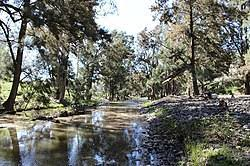
8. WILLI WILLI CAVES From "Helictite" magazine October 1965 Where is this place, you may well ask! Inland from the mid north coast - and not a place I have visited. Quotes are from the National Parks and Wildlife Plan of Management. " Willi Willi Caves Nature Reserve covers 8ha and is located on the Mid North Coast of NSW on the lower slope of a ridge in the upper Macleay River catchment, 35 km to the west of Kempsey. Willi Willi Caves Nature Reserve protects part of a limestone karst system. The Australian Speleological Federation (ASF 1985) lists some 37 entrances in the reserve with the Willi Willi Bat Cave being the main feature. This cave is basically one large chamber with a number of branching tunnels connected to it and is used as a maternity cave by the common...
